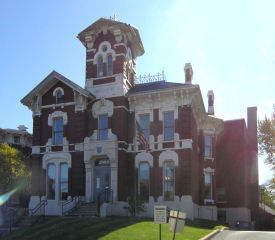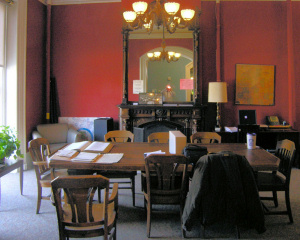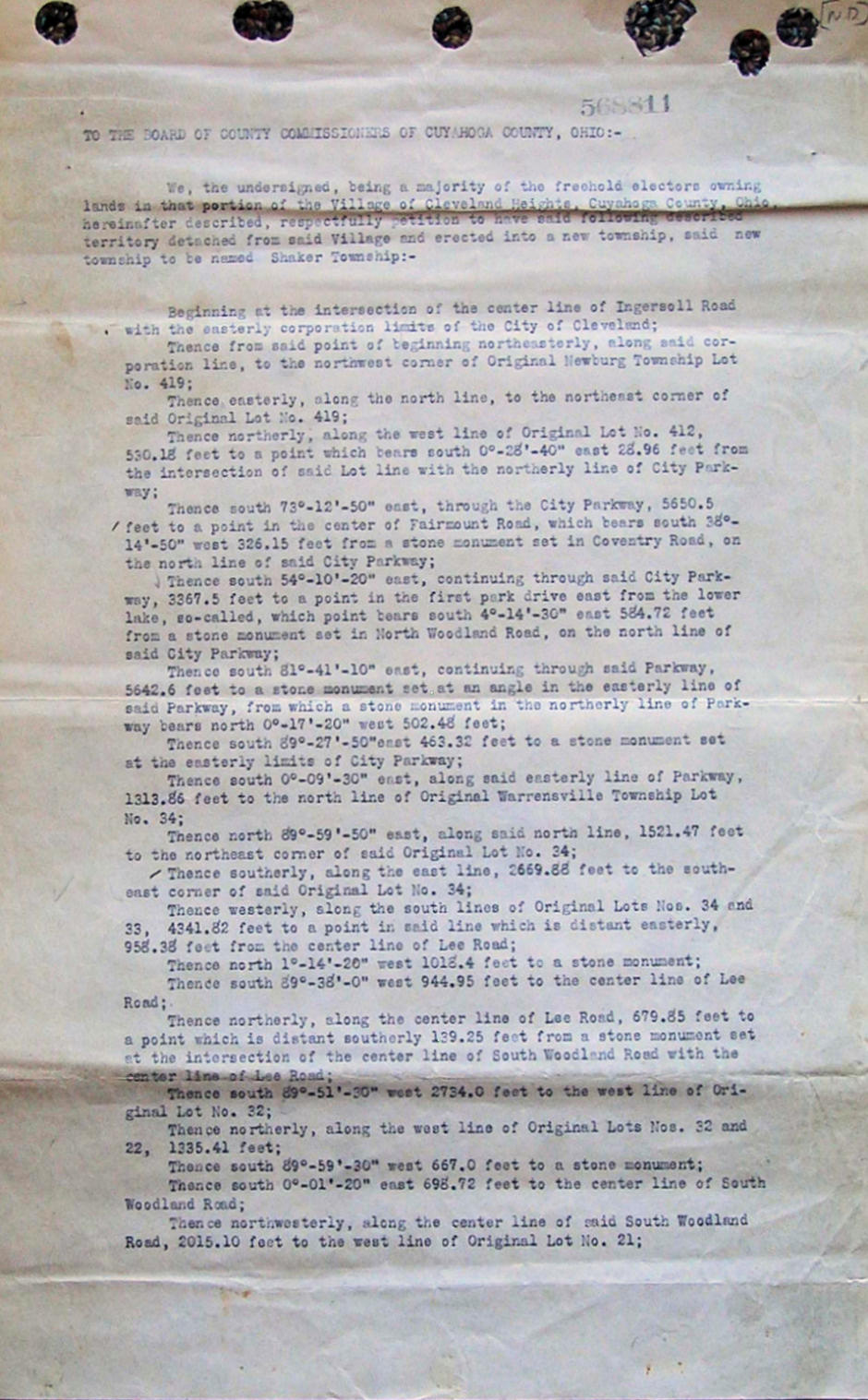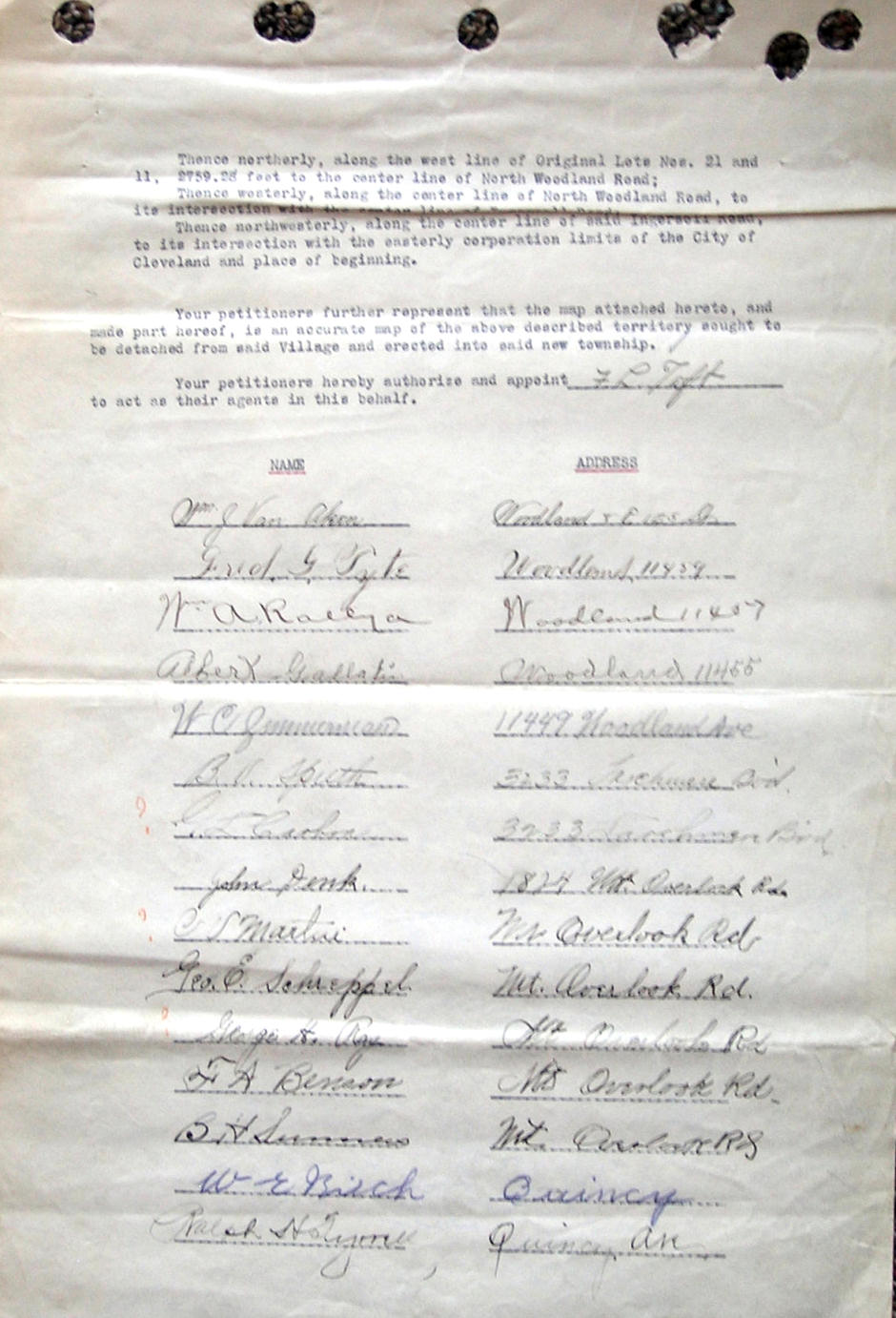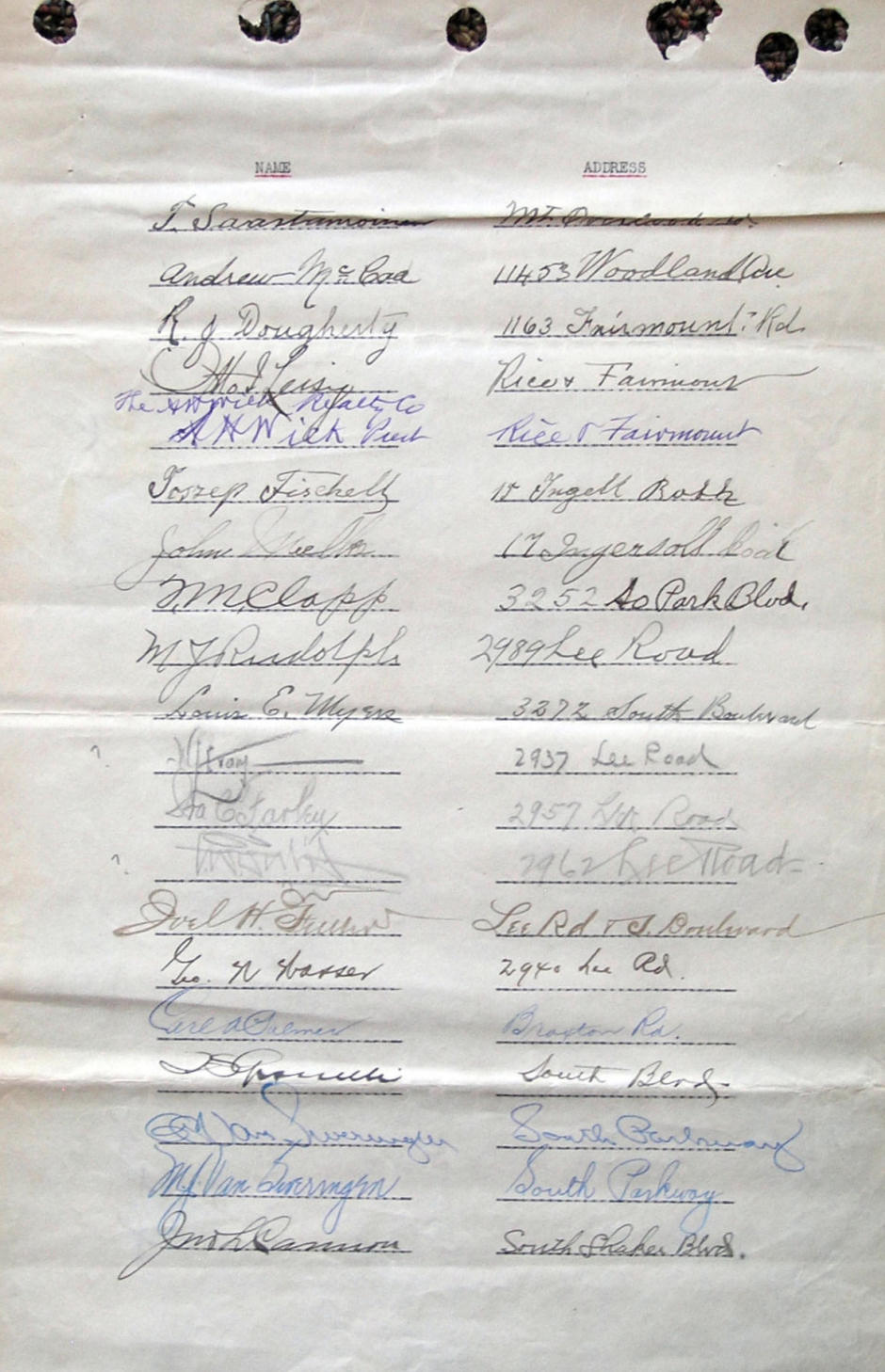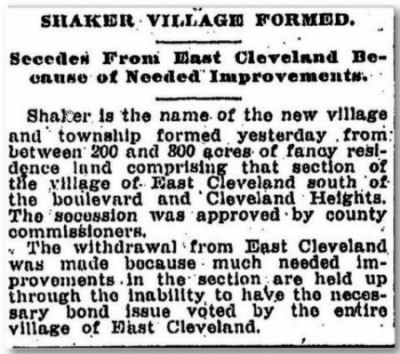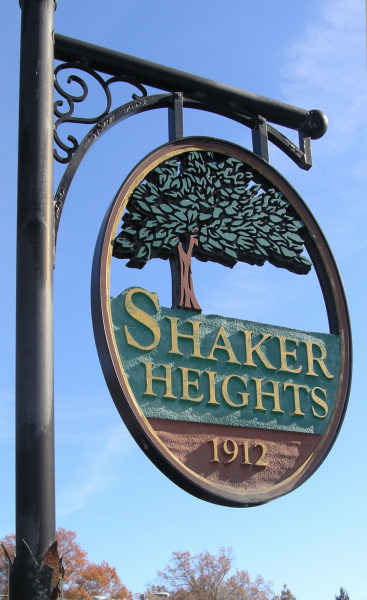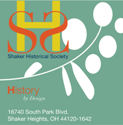|
The
signature of 26-year old William J. Van Aken appears first,
suggesting that he had a role in initiating and
circulating the petition.
It was the beginning of a lifetime of service to Shaker
Heights. [more on
William Van Aken] The Van Sweringen brothers
signed near the bottom of the third page.
The last page of this petition in the County Archives,
shown above, lacks the customary defined end showing the date
it was submitted, and
a
signature and seal acknowledging its receipt. Thus there
may have been additional pages.
Other documents showed how the cash and
debt of Cleveland Heights Village would be apportioned.
Based on the appraised valuation of properties, the new
village would get 11.2 percent of the cash held by
Cleveland Heights Village, but would also have to assume
the same share of its substantial debt. To see more
documents related to the founding, including the
valuation calculations and the County order that Shaker
hold its first elections in August 1911,
click here.
For the first map of Shaker Village that supported this
petition and information on the changes that would soon
follow, click here.
Some questions about the petition
-
What is a "freehold elector"?
A person who is eligible to vote and owns land in
the area requesting separation.
-
Why did so many who did not want
to be in Shaker Heights sign?
Most signers lived in two-family homes in the
western third of the area, near Cleveland. They were
foreign born skilled workers, who had little in
common with those building large homes near the
Shaker Lakes. For a discussion of their motivations,
see this page.
|
